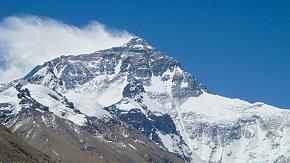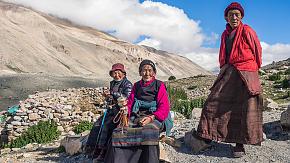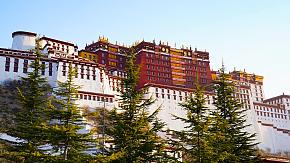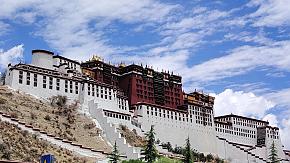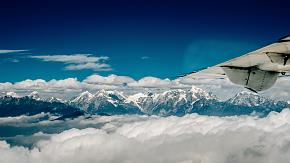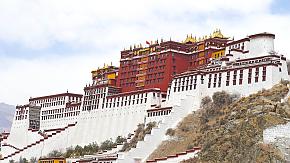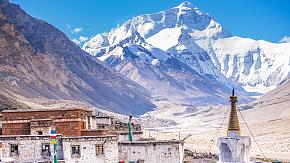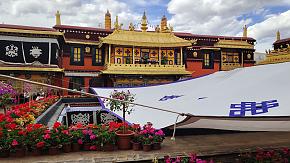Tibet Travel FAQs: Essentials & Useful Tips
Planning a trip to Tibet? Whether you're dreaming of exploring sacred monasteries, trekking around Mount Kailash, or simply soaking in the awe-inspiring Himalayan views, it's important to be well-prepared. In this guide, we've gathered the most frequently asked questions about traveling to Tibet, from permits and transportation to health tips and local customs, to help you plan a smooth and unforgettable journey.
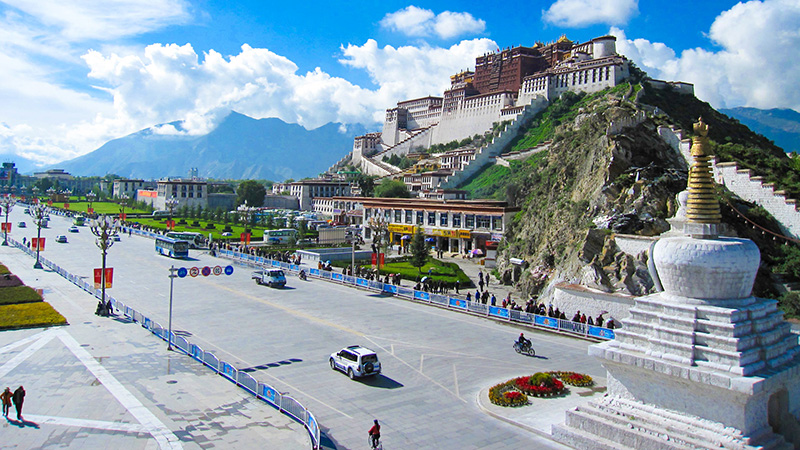 The Potala Palace in Lhasa, Tibet
The Potala Palace in Lhasa, Tibet
- 1. Do I need a special permit to travel to Tibet?
- 2. Is it safe to travel to Tibet?
- 3. What to pack for a Tibet tour?
- 4. What to do to prevent altitude sickness?
- 5. Are there places foreigners can't go in Tibet?
- 6. When is the best time to visit Tibet?
- 7. Is accommodation bad in Tibet?
- 8. How to get to Tibet from China's mainland?
- 9. Are there any cultural or religious etiquette rules?
- 10. What to eat in Tibet? Is it friendly for vegetarians?
1. Do I need a special permit to travel to Tibet?
Yes. Whether you're a solo traveler or traveling with family, all international travelers must travel with a travel agency, which will help you apply for the Tibet Travel Permit (TTP) and arrange a licensed local guide for you in Tibet.
You don't need to worry about the Tibet Travel Permit process yourself - just send your passport and Chinese visa (unless you're from one of the 43 visa-free countries) to the travel agency at least two weeks in advance, and you'll get the permit before your trip begins.
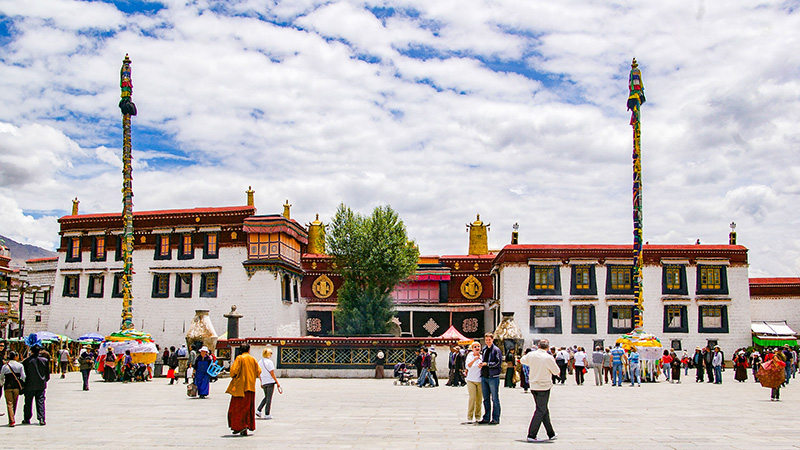 Jokhang Temple in Lhasa, Tibet
Jokhang Temple in Lhasa, Tibet
If you're only visiting Lhasa, the TTP is sufficient. However, if you plan to visit Everest Base Camp or Mount Kailash, you'll also need to apply for additional permits, such as the Aliens' Travel Permit and the Military Permit. We will handle these for you as long as you provide your passport details within the required timeframe.
2. Is it safe to travel to Tibet?
Yes, traveling in Tibet is actually very safe. The local social security is well-established, and the residents are warm and friendly. Your tour guide will accompany you throughout the entire trip, so if you experience any discomfort or inconvenience, you can always communicate with your guide. Our travel consultant will also provide 24/7 support to ensure you have a smooth and worry-free trip.
In addition to personal safety, your health is also well protected. Many scenic spots, such as the Potala Palace, and hotels are equipped with AED (Automated External Defibrillator) devices for emergencies. There are hospitals and clinics on the street in Tibet. Airports and train stations have medical rooms and support services available if needed.
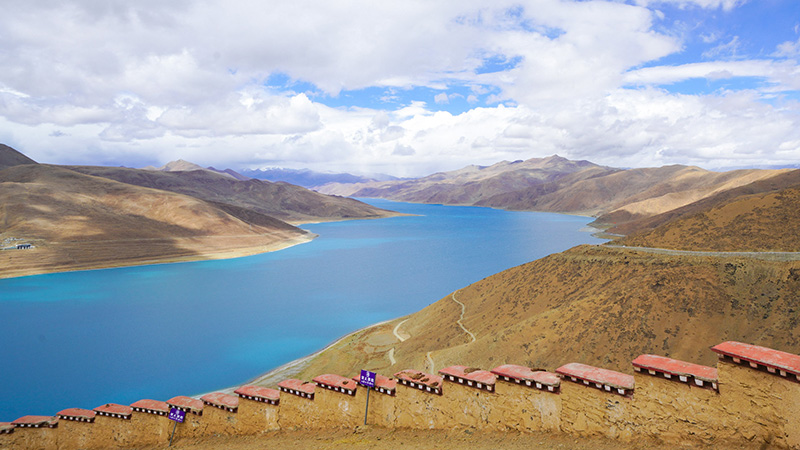 Lake Yamdrok
Lake Yamdrok
3. What to pack for a Tibet tour?
Compared to other parts of China's mainland, Tibet has a rather unique climate, so you'll need to pay a bit more attention when packing for your trip.
Layered clothing
Due to the high altitude, temperatures in Tibet are generally lower than in other Chinese cities, and the difference between day and night can be quite large. Even in summer, it's recommended that you pack a jacket.
We also suggest bringing more long pants and short-sleeved shirts rather than tank tops or skirts, as there are many religious sites in Tibet where it's best to avoid wearing overly revealing clothing.
Comfortable shoes
To enjoy the scenic views along the way in Tibet, you will walk a bit during your trip. So be sure to bring your most comfortable shoes. If your itinerary includes hiking or trekking, such as trekking alone the kora of Mount Kailash, it's wise to bring your hiking shoes.
Also, there are many stores renting wheelchairs in Tibet for tourists with mobility issues.
Sun protection & moisturizers
The UV rays in Tibet are quite strong, so it's essential to bring sun protection items such as a sun hat, sunglasses, and sunscreen. Additionally, Tibet has a dry climate, so it's a good idea to bring some moisturizing lotion if possible.
Please note that for sunscreen, lotion, or any other liquids you plan to bring, it's best to leave about 10% of the bottle empty. Due to the lower air pressure in Tibet, fully filled bottles from home may get squeezed and leak or even crack.
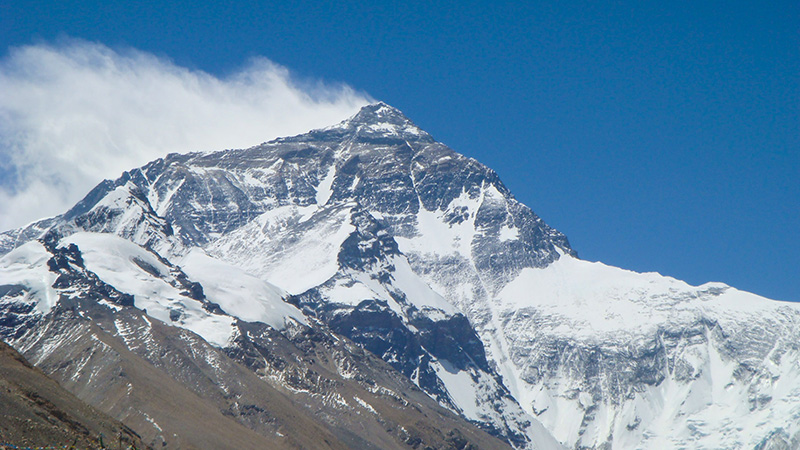 Mount Everest in Tibet
Mount Everest in Tibet
4. What to do to prevent altitude sickness?
Although everyone reacts to high altitude differently due to individual physical conditions, we've prepared three tips to help you cope with altitude sickness.
Step 1: Consult your doctor before your Tibet tour
You may ask your doctor if you should take altitude sickness medication in advance. Or what pills to bring to help relieve the symptoms of altitude sickness.
Step 2: Start at a lower altitude and slow down
To help your body adjust to the high altitude, you can start by visiting cities at relatively lower elevations, such as Lhasa. At the same time, when you first arrive in Tibet, make sure to get enough rest and avoid catching a cold. Allowing your body to fully relax can help prevent altitude sickness or reduce its symptoms.
Step 3: Get help asap if you feel uncomfortable
If you start to feel unwell, you can buy a portable oxygen canister from pharmacies, convenience stores, or hotel front desks to relieve the symptoms temporarily. Then, contact your guide to visit a nearby clinic or hospital for medical attention.
5. Are there places foreigners can't go in Tibet?
The southeastern part of Tibet, which borders India, is off-limits to foreigners even if you have a Tibet Travel Permit. This includes the famous Yarlung Tsangpo Grand Canyon. Although it's a pity that you can't visit this beautiful area, Tibet is vast and offers many other stunning sights waiting for you to explore.
6. When is the best time to visit Tibet?
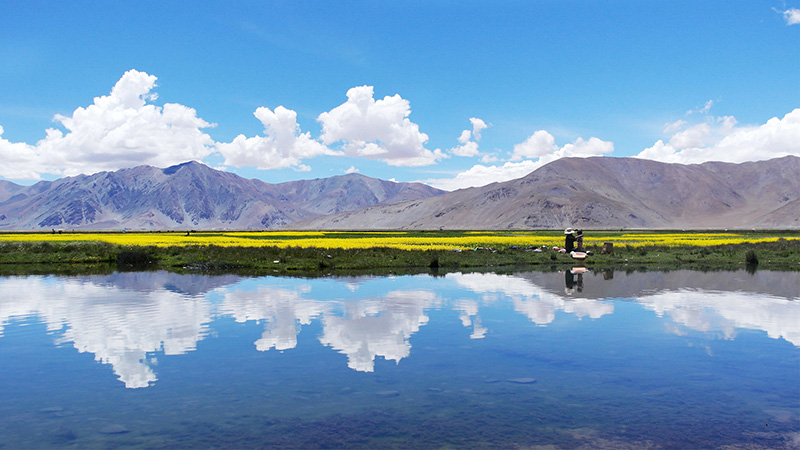 Lake Namtso in Tibet
Lake Namtso in Tibet
The best time to visit Tibet is from April to October. During this period, the weather is mild and the skies are clearer. It's good to trek or simply just enjoy the view in Tibet.
Recommended highlights by season:
- Spring (March to May): Celebrate the Peach Blossom Festival in Nyingchi.
- Summer (June to August): Comfortable season to visit lakes like Yamdrok or Namtso.
- Autumn (September to November): With clear skies and dry air, it's a good season to trek Mount Kailash or visit Everest Base Camp.
-
Winter (December to February): Enjoy the less crowded Lhasa and surrounding monasteries. However, attractions at higher altitude areas might close due to heavy snow.
Recommended Tour Itinerary
7. Is accommodation bad in Tibet?
No, the hotels in Tibet are actually good. Lhasa, Shigatse, and other cities in Tibet already have 4- to 5-star hotels, including internationally renowned chains such as St. Regis and Hilton, as well as certified local brand hotels. We will arrange a private vehicle to pick you up from your hotel and take you to the attractions, then bring you back, so you don't need to worry about transportation. There are also many 3-star hotels available if you're traveling on a tighter budget.
If you're going to Mount Kailash, there are supply stations around the kora where you can stay overnight. You can also choose to stay at small nearby monasteries.
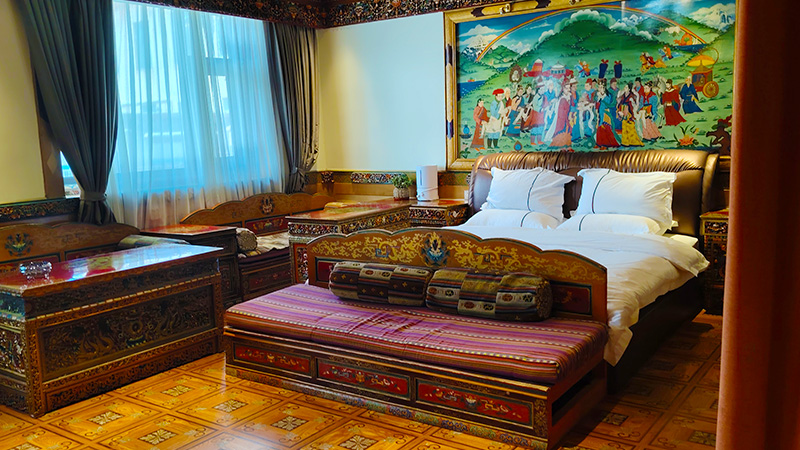 A clean hotel room with Tibetan decorations
A clean hotel room with Tibetan decorations
8. How to get to Tibet?
There are two main ways to get to Tibet: by airplane or train.
- By plane: Taking a flight is the most convenient and fastest option but offers a more expensive price than taking a train. It usually takes 2 to 4 hours to fly from Beijing, Shanghai, or Chengdu to Lhasa, Tibet. You can overlook the snow peaks through windows on the plane.
- By train: Taking a train will cost less but take more than 20 hours to reach Lhasa. But you will see the endless Tibetan plateau as well as mountains in the background.
No matter which transportation method you choose to enter Tibet, you will need to show your Tibet Travel Permit before boarding.
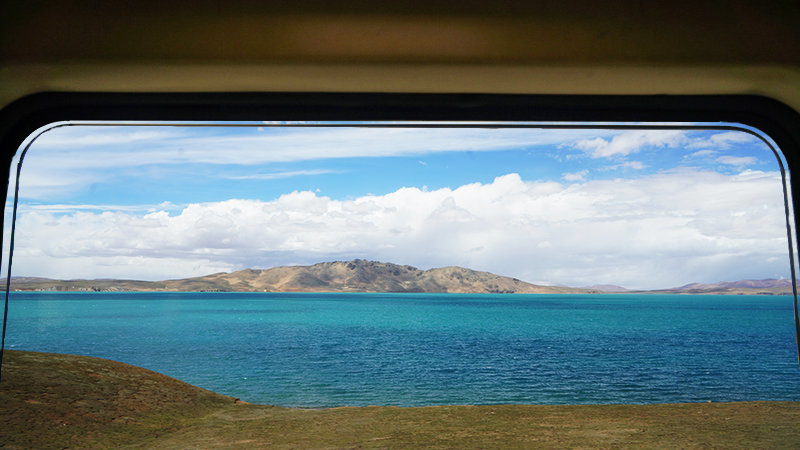 Enjoy the view of Tibetan plateau on the train
Enjoy the view of Tibetan plateau on the train
9. Are there any cultural or religious etiquette rules?
Yes. Because Tibetan people are deeply religious, it's important to keep a respectful distance and observe proper etiquette when interacting with them.
Here are some useful tips for traveling in Tibet:
- Walk clockwise around monasteries, stupas, and prayer wheels.
- Ask permission before taking photos, especially inside monasteries or of monks and locals.
- Dress modestly, especially when visiting religious sites—avoid shorts, tank tops, or revealing clothing.
- Take off your hat and sunglasses when entering temples or monasteries.
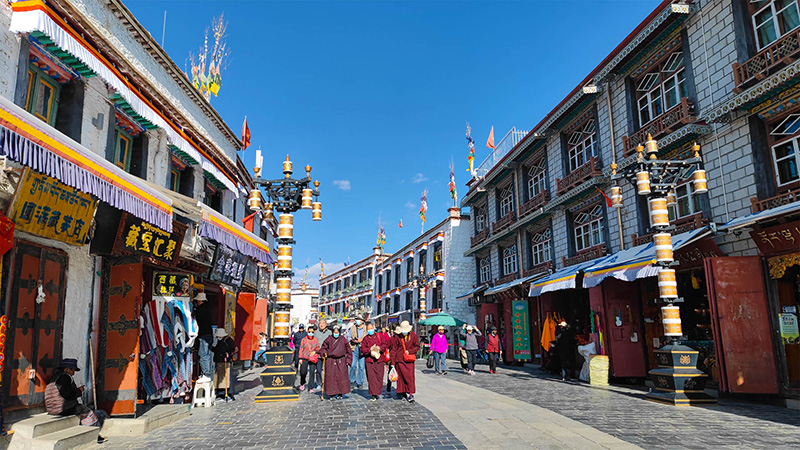 Barkhor Street near the Potala Palace in Tibet
Barkhor Street near the Potala Palace in Tibet
Can I visit a Tibetan family?
Yes, you can. If you want to visit a local Tibetan family, we can arrange it for you. When you enter the house of a Tibetan family, you will firstly receive a warm welcome from the host. Then, you can admire traditional Tibetan architecture and decorations like thangka art and prayer flags. The host will introduce the cultural items in their house. Also, you can communicate with them and learn about their daily life and customs. Don't worry about the language barrier. Your guide will help you with friendly interaction and translation during the visit.
10. What will I eat in Tibet? Is it friendly for vegetarians?
Tibetan people regularly eat a lot of yak meat and dairy products. These foods are designed to suit the high-altitude environment, providing high calories that help them stay warm in winter and efficiently replenish energy.
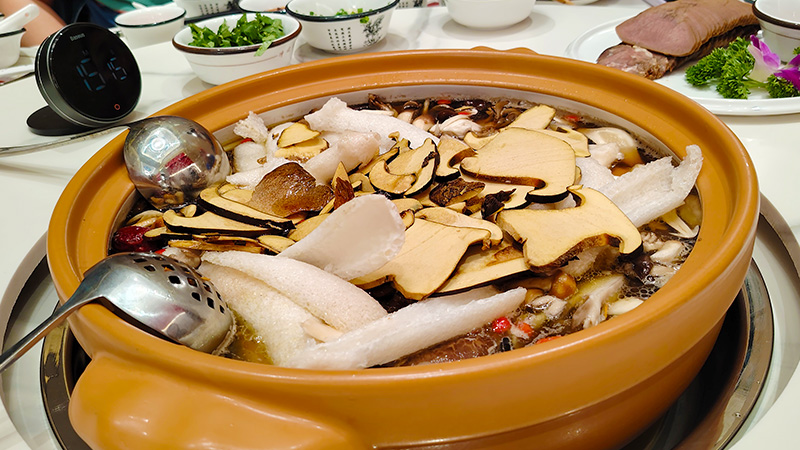 Mushroom hotpot in Tibet
Mushroom hotpot in Tibet
While meat (especially yak meat) is quite common in Tibetan restaurants, you can still find vegetarian options. Many restaurants offer vegetarian noodles, rice dishes, stir-fried vegetables, etc. Also, monastery-run restaurants often serve simple, meat-free meals.
Plan Your Tibet Tour With Us
If you need help with planning your Tibet tour or have other questions, feel free to contact us or leave a message at trip@odynovotours.com. Our Tibet experts will get back to you as soon as possible to help you craft a personal itinerary in Tibet.
Related Posts You May Like
What Our Clients Say
"Great Customized Service", "Trip of A Lifetime", "Exceed All Expectations"

